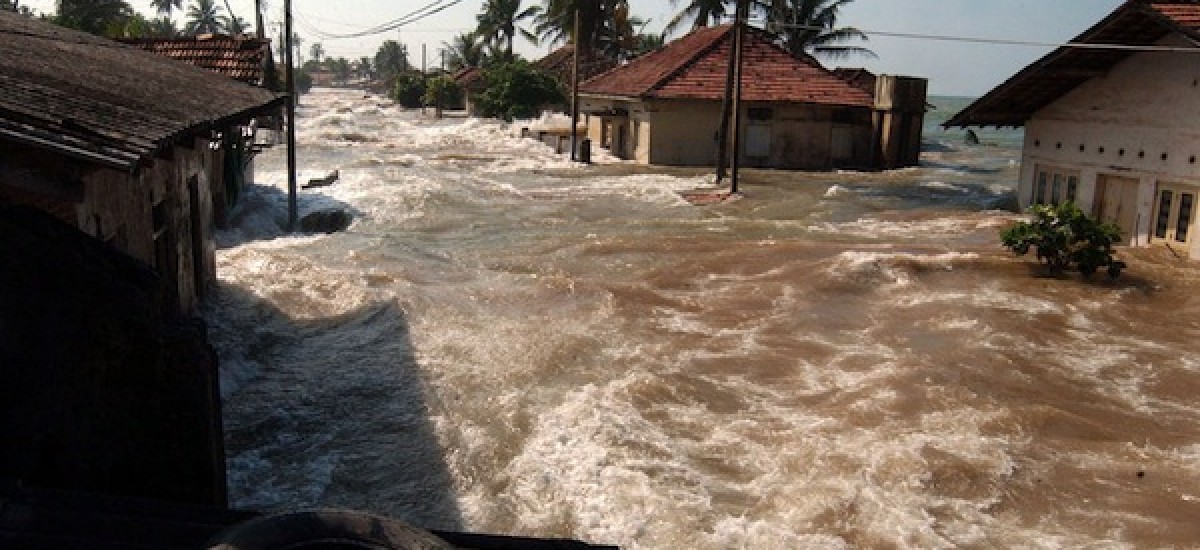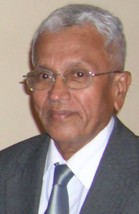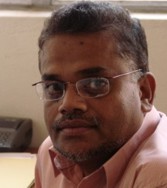
Photo taken during Boxing Day Tsunami, 26 December 2004
DON’T PANIC (always written in upper-case) was timeless advice that writer Douglas Adams deeply etched into the minds of all who read his famous novel, The Hitchhiker’s Guide to the Galaxy. Arthur C Clarke once called it ‘the best possible advice for the human race’.
But panic we do, regularly, as individuals, communities and sometimes as a whole country. The latest was on 15 April 2011, when confusion and panic were reported from many coastal areas of Sri Lanka following rumours of an oncoming tsunami. It was attributed to a television channel that had broadcast the views of a Lankan geologist who is speculating on predicting earthquakes with a little help from the heavens. Well, at least certain planets in the Solar System.
Scientific speculation is one thing, but causing public alarm and panic – especially at holiday time – is quite another. The Disaster Management Centre (DMC) was quoted as saying its units in the southern coastal areas had to take special measures to assure the people that there was no threat. The media reported how some people in Matara, Galle, Kalutara, Negombo, Trincomalee and Batticaloa fled their homes fearing another tsunami. Many of these areas were battered by the 2004 Boxing Day tsunami.
The panic prompted the Disaster Management Minister to say that ‘legal action will be taken against astrologers, academics or others who make predictions on natural disasters and thereby cause panic among the people’.
However, the ‘panic broadcast’ was not an isolated incident. The matter had been building up from early or mid March 2011, when reports started appearing in mainstream newspapers as well as news websites of a Peradeniya university geologist team claiming to have found a new method to predict earthquakes. These reports appeared in privately owned media (example: The Nation, 27 March 2011) as well as in state owned media (examples: Lankapuvath, 9 April 2011; Daily News, 9 April 2011). Soon, the regional news media also picked up the story (example: Times of India/PTI, 9 April 2011).
Sinhala newspapers went further. Some openly cheered this ‘triumph’ of a local scientist in a quest where hundreds of scientists worldwide have not yet succeeded. There were also suggestions of ‘astrology being proved right’ and ‘Eastern knowledge knowing far more than western science’. Many of these ideas were opinions of individual journalists who didn’t bother to separate their reportage from commentary.
I was concerned. The spirit of enquiry is essential for new knowledge to be created, but science is a peer-reviewed and self-critical process. All ideas must be discussed and debated, ideally by fellow specialists competent and experienced in the same discipline. I wasn’t sure if that was happening. Our mainstream media were not helping either.
Prof. Kapila Dahanayake
So I decided to get to find out more. I first spoke to an old contact, Professor Kapila Dahanayake, Senior Professor of Geology at the University of Peradeniya. Among many other things, he is a member of the Technical Advisory Committee of the Ministry of Disaster Management. This is a summary of what he said (and has been saying for a long time):
An earthquake can happen anywhere, anytime – on land, or under the sea. According to current knowledge, it is not possible to predict an earthquake in advance.
For an earthquake to trigger a tsunami, several conditions have to be satisfied:
- It happens under the sea.
- Focus of the earthquake should be within 100 kilometres below the seabed.
- Magnitude of the quake should be 6.5 or higher.
- Disposition of the quake should be vertical or near vertical.
A tsunami can occur when all these conditions come together. Only after an earthquake happens and the tsunami generation is monitored can a specific warning be given with any specificity. Not before.
Scientists have been trying to anticipate earthquakes or discern probabilities for a long time. But current scientific knowledge is not adequate to make any kind of advance prediction about an earthquake, still less of a tsunami.
Prof. Atula Senaratne
I then spoke to the man at the centre of the current controversy: Professor Atula Senaratne, Associate Professor in Geology at University of Peradeniya. This was my first contact with him. Typed below is a near-verbatim version of my phone conversation which took place on the morning of 18 April 2011. I approached this with an open mind. I hope experts will join this debate to take this forward.
Nalaka Gunawardene: What is the basis of recent claims attributed to you in the media that you have found a new method to anticipate or predict earthquakes?
Atula Senaratne: Many people have been asking me if there is a basis for a Mayan warning suggesting the world could end in 2012 with a geological catastrophe. There is no current capability in geoscience to predict this, but this made us curious. So my team and I looked up the historical data on all the major earthquakes, and in particular those that have occurred during the past 100 years.
Q: What was your source for this data?
A: US Geological Survey, USGS. It is publicly available data with worldwide coverage. We studied the characteristics of these earthquakes – when and where they occurred. We were aware of various ancient beliefs in different cultures, both eastern and western, that relate the occurrence of earthquakes to solar eclipses, new Moon and full Moon, etc. We also noted that the 2004 Indian Ocean earthquake, which triggered the massive tsunami, occurred on a full Moon day. But this co-relation was only sometimes, not always.
Q: Do these beliefs have any basis in current geological science?
A: Well, there is no clear statement from anyone so far on how earthquakes happen. They are said to happen along the geological (tectonic) plate boundaries, and rarely within the plates. We looked at 100 years of actual data. The plates within the Earth are moving all the time, but earthquakes don’t happen all the time when such movements are on a normal scale. It must need a sudden change in plate movement. Could there be an extraneous influence? Could it come from outside our planet – for example, gravitational pull from the Sun, Moon or the other planets in the Solar System? We wondered.
Q: How did you investigate your hypothesis?
A: We couldn’t find a direct co-relation with the Sun and Moon, although we know that these two bodies are principally responsible for tides on our planet. We then asked: what about the planets? We took the dates of the 136 significant earthquakes and, using a commercial astronomical software, we plotted the historical position/location of the planets for the date and time when those earthquakes are recorded to have occurred.
Q: What was the software you used?
A: Well, it’s a commercially available software. I can’t remember its exact name. When we did this plotting, we found a special kind of planetary configuration involving Jupiter, Uranus, Mars and Saturn.
Q: What exactly was the configuration?
A: They were aligned within a small angle. And the Sun and Moon were also on the same side, or in the same direction, or on the opposite side. In short, the planets were not scattered all over the sky. We looked carefully, went back and forth many times, and we found that this kind of planetary arrangement was there about 75 per cent of the time when the 136 key earthquakes have occurred during the past 100 years. This was not always, but statistically significant enough. So we asked: maybe we can use this factor as a way to assess future probability of significant earthquakes occurring?
Q: What did you do next with this speculation?
A: We wanted to test this. So we made several predictions among the geologist groups we are in contact with both nationally and internationally. We noted that there could be such a planetary alignment again on 20, 21 and 22 February 2011. And the Christchurch earthquake happened on 22 February. We prepared a research paper, which was presented at the Geological Society of Sri Lanka (GGSL) annual sessions on February 25 and 26.
Q: Where was it held?
A: It was held at the Institute of Fundamental Studies in Kandy. We said this was pure statistical analysis and as curious scientists we had noticed a co-relation which we wanted to probe further.
Q: Was there much discussion?
A: Well, we were encouraged to investigate more, which is how science works.
Q: Did you present and publish a paper?
A: The abstract is available online. We presented it as PowerPoint. We will write it up as a paper soon. (Writer’s note: The abstracts for the February 2011 symposium are not to be found on GGSL as at 18 April 2011. Previous session abstracts are given.)
Q: What happened next?
A: We made three or four further forecasts for March 2011. One was that there could be a significant earthquake over the north Pacific ocean between 3 and 10 March. The Sendai (Tohoku) earthquake occurred on March 11, devastating northern Japan and triggering a major tsunami. We realised our predictions are coming true one by one. We then made a forecast for April 2011, trying to test our hypothesis further. We said there could be significant quakes close to Turkey and on the China-India border. These did happen, as you can find on the USGS website. It was by this time that we also thought about releasing these initial speculations to the media, as this is a topic of considerable public interest.
Q: The media picked up some elements of your investigation, and then ran with it. Is that how it happened?
A: Well, some people – including some journalists – asked me: is there any possibility of a tsunami occurring in the Indian Ocean? I clearly said that tsunami is a secondary thing, that is sometimes triggered when an earthquake happens under the ocean under certain conditions. I stressed in all my media interviews that tsunamis are not predictable.
Q: What really happened with the so-called ‘panic broadcast’ that was carried on Swarnavahini TV channel on April 15?
A: I carefully explained that we are looking for a way to predict earthquakes, and that it is just not possible to predict any tsunamis. During this broadcast, the TV station showed some images from the 2004 tsunami. Maybe that created a false impression in the minds of some viewers. The announcer clearly said this is only an attempt to some interesting new information, and not meant to panic anyone. But it is human nature for people to assume the worst. This may have been the reason for the panic that resulted…
Q: Are you taken aback by the allegations of scaremongering implicating yourself and the TV station?
A: I did all this in good faith, and had no intention of scaring anyone or creating any panic. This is an emerging science, and we are working hard to push its frontiers.
Q: Science advances by peer review and critique. Have you published your hypothesis or speculations in a peer reviewed scientific journal?
A: Not yet, but we are working on a research paper for precisely such an international, peer reviewed scientific journal. I have more than 40 such papers already published in my name so far.
Q: When you publish, how do you plan to explain the statistical co-relationship you’ve noticed?
A: We want to theorise about this (connection). It could be either gravitational or magnetic. We know that deep inside our planet, below the crust and mantle, there is a liquid zone sometimes called the ‘metallic ocean’. We suspect that perhaps this metallic zone is somehow affected by the influence of certain celestial bodies.
Q: But we know that gravity weakens with distance. The planets you mention are so many millions of kilometres away. So, assuming your theory holds, can such far away bodies exert a noticeable influence?
A: Well, maybe it’s not gravity. Yes, gravitational pull is based on distance. Maybe it has something to do with magnetic fields. There is so much we still don’t know! That is why we want to study more. I call this astrogeophysics, a new and emerging science. (Writer’s note: There is already a branch of science by this name, defined in the Encarta dictionary as ‘the study of the surface and internal physical processes of planets and moons excluding the Earth’).
Q: Considering your line of enquiry is now extending beyond our planet, don’t you need an astronomer involved?
A: At the moment we don’t have any. I want to make it very clear that our work has nothing to do with astrology! We are using the scientific method.
Q: The Daily Mirror newspaper ran a news story on 16 April 2011 (curiously, not included in its website archive) that quoted you as saying “it is not possible to explain the method to laymen”. That’s a bit presumptuous – did you really say so?
A: No, I did not say such a thing. I have just explained to you the gist of what we are thinking and investigating.
Q: So what happens next?
A: There is a curious statistical co-relation we have found by just looking at data that has been available to many others. We may take years to understand this. But we feel it is definitely worth asking these questions and probing further, both to advance knowledge and also considering the massive potential to save lives by improving our ability to predict earthquakes.
###
Trained as a science writer, one-time journalist Nalaka Gunawardene still asks lots of questions. He blogs at http://movingimages.wordpress.com/ and writes a weekly column on science, environment and media in the Ravaya newspaper.



